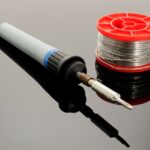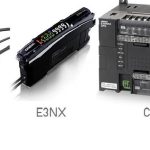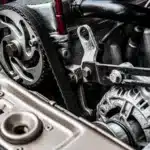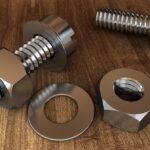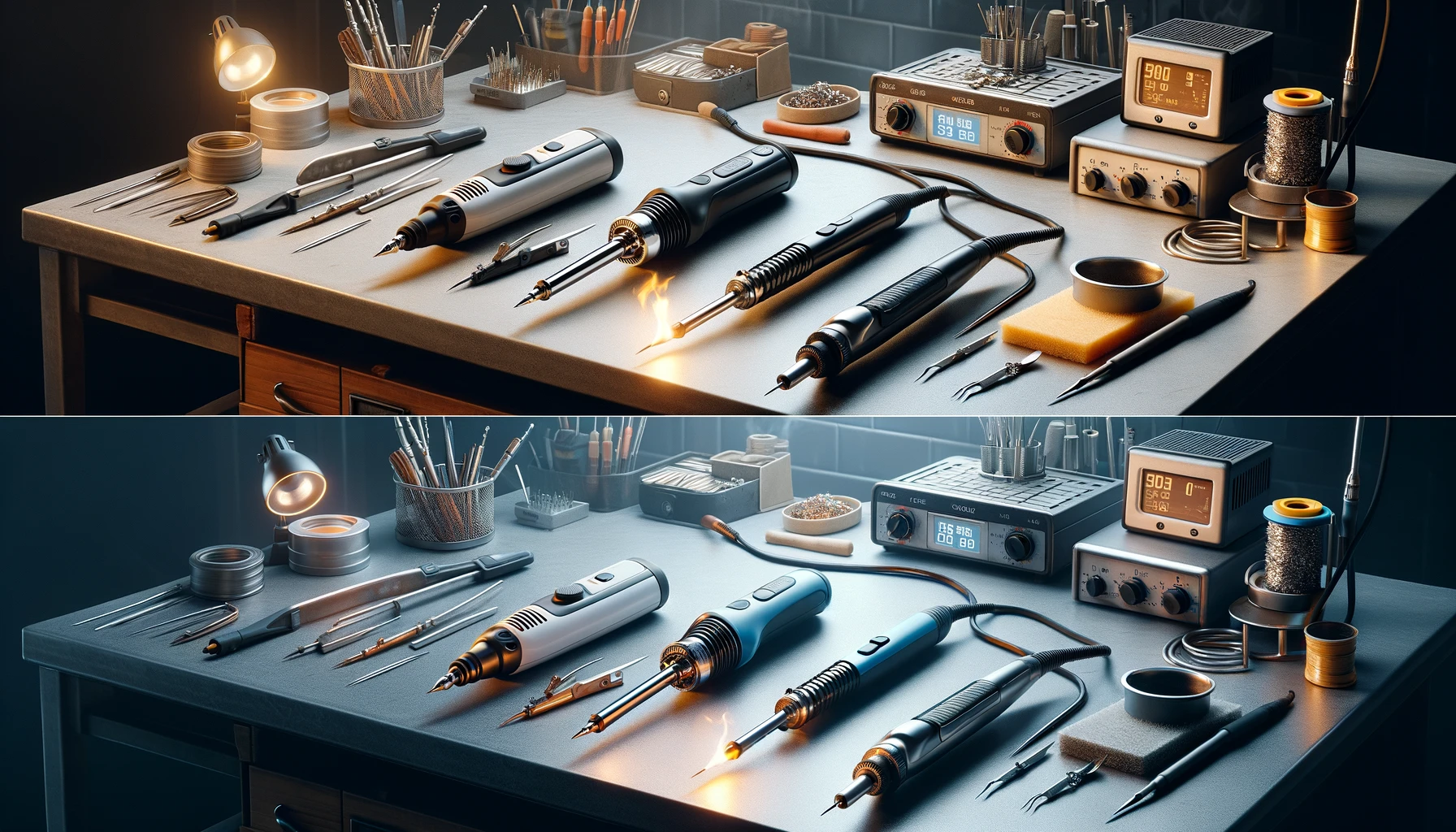
Introduction
Soldering – a fundamental skill in electronics – allows the creation and repair of various electronic devices. A crucial aspect of this components is choosing the right soldering iron, which comes in two primary types: gas-powered and electric soldering irons. But when it comes to choosing one, a key decision arises: gas or electric? This article delves into the comparison between gas and electric soldering irons to help you pick the right fit for your projects.
Overview of Soldering Irons: Understanding the Basics
They are essential hand tools that join two or more items together with a filler metal called solder. The melted solder flows into the space between the components, creating a strong electrical and mechanical connection once it cools. A soldering iron typically consists of a heated metal tip and an insulated handle. Moreover, these hand-held tools come in two main types: electric and gas-powered, and they are widely used in electronics, plumbing, jewellery making, and metal assembly. Additionally, for small projects, a soldering iron kit is a good choice, while a soldering station is a better option for more precise temperature control.
What is a Gas Soldering Iron?
Gas soldering irons are portable and versatile soldering tools that use butane gas as a fuel source. These tools are also called butane soldering irons because they use butane gas instead of electricity for the heating mechanism. A gas soldering iron features a refillable canister filled with butane gas, which is a popular choice because it is easy to store, transport, and ignite. Gas soldering irons are widely used for soldering tasks in situations where electricity is not readily available.
What are the Pros and Cons?
They offer exceptional advantages in terms of:
- Portability: One of the notable advantages of gas soldering irons is their portability. They do not require an electrical outlet, making them ideal for fieldwork or on-site repairs.
- Quick Heat-Up Time: Gas soldering irons typically heat up faster than their electric counterparts, allowing you to start your work almost immediately.
- Multifunctionality: Many gas soldering irons come with interchangeable tips. These versatile irons can be used for tasks beyond soldering, such as heat shrinking, cutting rope, and more.
In addition to their unprecedented benefits, gas irons also have some drawbacks, including;
- Less Temperature Control: It can be trickier to maintain a consistent temperature compared to electric irons with thermostats.
- Fuel Costs: Using butane can be more expensive in the long run compared to electric soldering irons, which only require electricity.
- Safety Concerns: An open flame requires more caution to avoid burns and unintended ignition.
- Maintenance – Refueling: Using gas soldering irons requires a regular supply of butane gas on hand.
What is an Electric Soldering Iron?
An electric soldering iron is the most commonly used soldering tool that uses electricity. Electric models consist of an insulated handle and a soldering tip made of good heat-conducting materials, such as copper. The handle is made of a heat-resistant material, such as plastic or rubber, to protect the user from burns. They come in a variety of shapes, materials, and sizes, suitable for both beginners and professionals for a variety of applications.
What are the Pros and Cons of Electric Irons?
Using electric soldering irons offers unparalleled benefits, making them essential hand tools for a broad spectrum of soldering tasks. Some notable benefits include:
- Consistent Heat: Electric soldering irons provide a steady and reliable heat source, which is essential for precision soldering tasks.
- Cost-Effective: Once purchased, electric soldering irons are more economical to operate since they only need electricity.
- Safety: Electric models are generally considered safer than their gas counterparts, as there are no open flames or flammable gases involved.
The drawbacks include:
- Limited Portability: Electric soldering irons need a power source which limits their use in outdoor or remote locations.
- Slower Heat-Up Time: They often take longer to reach the desired temperature compared to gas soldering irons.
- Cable Restrictions: The presence of a power cord can sometimes restrict movement and reach.
Gas-Powered or Electric Irons: Making the Decision
Now, as you have gone through the essentials of both these soldering tools, choosing between them ultimately depends on your specific needs and work environment.
Choose a Gas Soldering Iron If:
- You need portability and flexibility for fieldwork.
- You require a quick heat-up time.
- You want a versatile tool for various applications.
Choose an Electric Soldering Iron If:
- You work primarily at a bench with reliable power access.
- You need consistent and precise temperature control.
- You prefer a safer, flame-free operation.
Bottom Lines
In conclusion, they are ideal for most soldering jobs, especially for precise work with delicate electronics. Their wider temperature control and safety features make them a versatile choice for a workshop. Gas soldering irons, on the other hand, are a good option for those who need a portable and powerful tool for soldering projects, especially when working outdoors or away from a power source. Additionally, for beginners, an electric soldering iron is generally the safer and more versatile option.







